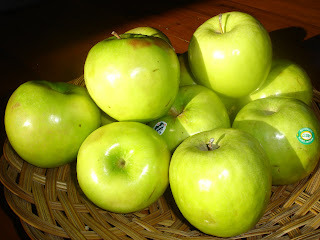
Taro is considered the daily staple food in many Pacific Island countries including Papua New Guinea, whereas it is only commonly eaten during feast days in Singapore( festival of the hungry ghosts and the mid- autumn moon festival). The type favoured in Singaporean cuisine produces smaller tubers up to tennis ball size, which are often barrel shaped or roundish and the skin is purplish brown to brown and the flesh white. Whereas, the Polynesians, Micronesians and Melanesians prefer the more massive variety whose tubers are more often shaped like pawpaw or papaya, and their yellowy skin scrapes pink.
During my stay in Papua New Guinea, I have found that taro is both a common and prestigious food item, due to its importance as ceremonial presentations on communal events and occasions such as weddings, funerals, etc. The leaves of the taro plant are also featured prominently in West New Britain Provinces cooking, especially as cooked taro leaf has the consistency of cooked spinach for dishes such as Lakainai mumu. The Lakalai mumu traditionally contains pork, fish, and garden greens (pumpkin leaves and taro leaves). The tuber itself is also prepared in various methods including baking, steaming in earth ovens. In the Chinese cuisine, taro is used in a variety of styles, mainly as a flavor and texture enhancing ingredient. It is commonly braised with pork or beef with preserved bean curbs in home cooking. It is used in the yam chai or dim sum cuisine in Australia to make a small plated dish called taro dumpling, as well as a popular pan-fried dish called taro cake (
woo tau ko) found in most food courts in Singapore. Today, I am posting my mother's popular taro soup. It is a combination of a creamy soup with prawns and Chinese mushroom, together with the soft intact texture of cooked taro, makes this recipe an all time favourite in the family.
Taro Soup Recipe:Ingredients600g taro, cubed
180g dried Chinese shitake mushrooms, soaked in warm water and shredded finely.
250g fresh prawns shelled and deveined. Use 150g Dried Prawns (hey bee/ har mine) for authentic taste.
3 cloves of garlic minced.
1 tsp salt
1/4 tsp black pepper
2 Tbsp sesame oil /cooking oil
1 liter stock
1 pc. coriander
1pc spring onion sliced.
Directions.
Heat the oil in the pan, and stir in garlic. Stir fry until fragrant. Put in the cubed taro and fry until slightly browned
2. Add stock and boil for 20 to 30 minutes at medium heat, stirring occasionally.
3. When the taro is soft, drain and divide into 2 portions. Keep the boiled soup.
3. Pour the one potion of boiled taro with the soup into a food processor or blender and process until it reaches the creamy consistency.
5. Heat one tablespoon of sesame oil in a pot and add fresh prawns (if using dried prawns, fry until fragrant), soaked and shredded Chinese mushrooms. Fry the prawns until its colour changed and pour the creamed taro soup into the pot. Add the other portion of cooked taro cubes into the soup and bring to a boil. Season to taste with salt and pepper.
6. Sprinkle with the coriander and spring onion and serve.














































